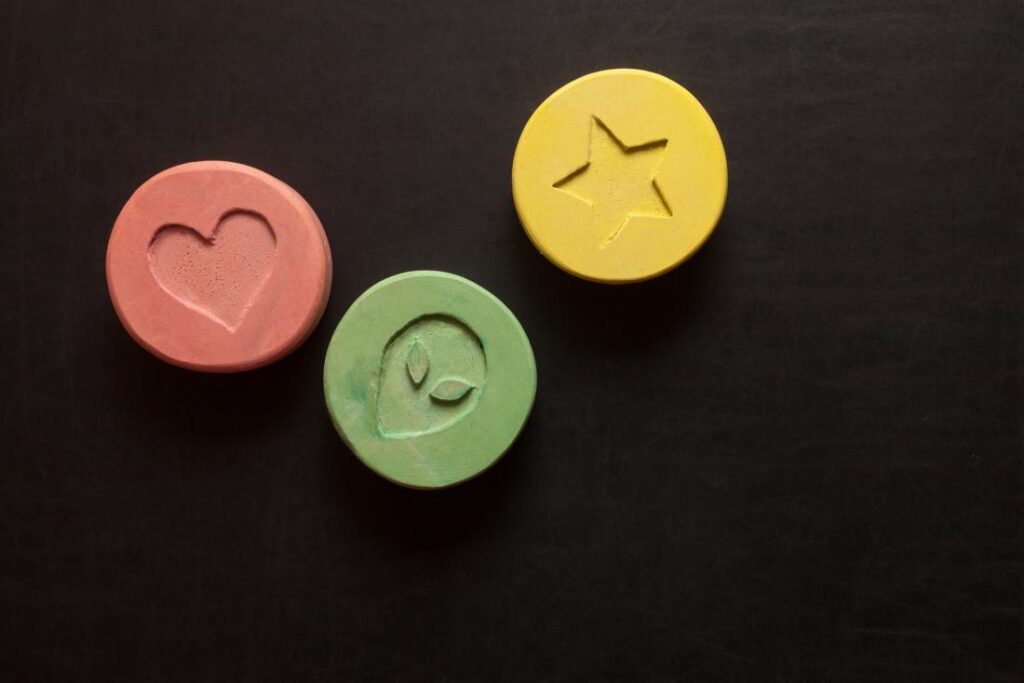Uncategorized
MDMA and Molly: Duration in the System and Key Differences
MDMA, often referred to as Ecstasy or Molly, has been a focal point in discussions about recreational drugs, therapeutic use, and the broader implications of psychoactive substances. One of the key questions that arises in the context of MDMA and Molly is their duration in the body and how they are processed by the system. Understanding how long MDMA stays in your system, the nature of Molly, and the relationship between MDMA and Molly can provide valuable insights into their use and effects. This comprehensive blog post will explore these topics in depth, providing a thorough analysis of MDMA and Molly, their presence in the body, and their implications for users.

How Long Does MDMA Stay in Your System?
MDMA, or 3,4-methylenedioxy-methamphetamine, is known for its psychoactive effects, including euphoria, enhanced sensory perception, and emotional openness. However, understanding how long MDMA remains detectable in the body is crucial for several reasons, including drug testing, managing potential side effects, and comprehending its impact on health.
1. Metabolism of MDMA
MDMA is metabolized primarily in the liver, where it is broken down by enzymes into various metabolites. The primary enzyme responsible for metabolizing MDMA is cytochrome P450 2D6 (CYP2D6). The rate at which MDMA is metabolized can vary based on individual factors such as genetics, liver function, and other medications being taken.
2. Duration of Detectability
The duration that MDMA remains detectable in the system can vary depending on the type of drug test used, the user’s metabolism, and the dose consumed. Here is an overview of how long MDMA can be detected in different types of drug tests:
- Urine Test: MDMA is typically detectable in urine for about 1 to 3 days after use. However, in some cases, especially with heavy or frequent use, MDMA may be detectable for up to 5 days.
- Blood Test: In blood tests, MDMA is usually detectable for up to 1 to 2 days after use. Blood tests are less commonly used for routine drug testing but can be more precise for detecting recent use.
- Saliva Test: MDMA can be detected in saliva for approximately 1 to 2 days after use. Saliva tests are less invasive and can be used for on-the-spot testing, but they have a shorter detection window.
- Hair Test: Hair follicle tests can detect MDMA for a longer period, typically up to 90 days. Hair tests are less commonly used for drug testing but can provide a longer-term view of substance use.
3. Factors Affecting MDMA Detection
Several factors can influence how long MDMA stays in your system:
- Dosage and Frequency of Use: Higher doses and frequent use can lead to longer detection times as the drug accumulates in the body.
- Metabolism: Individual metabolic rates vary, and factors such as age, weight, and liver function can impact how quickly MDMA is processed and eliminated.
- Hydration and Health: Hydration levels and overall health can affect the rate of drug metabolism and elimination. Dehydration or liver dysfunction may slow down the process.
- Drug Interactions: Other medications or substances taken concurrently with MDMA can affect its metabolism and clearance from the body.
Molly Drug: What is Molly?
Molly is a common term used to describe MDMA in its pure crystalline or powder form. The name “Molly” is derived from the word “molecular,” suggesting that it is a pure, unadulterated form of MDMA. However, despite the intention of purity, Molly is not immune to adulteration, and products sold as Molly may sometimes contain other substances.
1. Purity and Form
Molly is typically sold as a white or off-white powder or crystalline substance. It is intended to be consumed in its pure form, unlike Ecstasy, which is often found in pill form and may contain various additives or contaminants.
2. Perception vs. Reality
While Molly is marketed as a pure form of MDMA, the reality can be different. Testing of Molly samples has shown that they may contain not only MDMA but also other substances such as synthetic cathinones (“bath salts”), methamphetamine, or caffeine. The perceived purity of Molly does not always reflect its actual content.

3. Risks Associated with Molly
The risks associated with Molly are similar to those of MDMA but can be exacerbated by the presence of adulterants. Users of Molly may experience the desired effects of MDMA, such as euphoria and emotional openness, but may also face adverse effects related to the unknown substances mixed with the drug.
Is MDMA Molly? Understanding the Relationship
The relationship between MDMA and Molly often leads to confusion, as the terms are frequently used interchangeably. However, while they are closely related, there are important distinctions to be aware of.
1. MDMA and Molly: The Basics
MDMA (3,4-methylenedioxy-methamphetamine) is the chemical compound that produces the characteristic effects of euphoria, empathy, and enhanced sensory perception. Molly refers to MDMA in its pure crystalline or powder form.
2. Purity and Form Differences
The key difference between MDMA and Molly is that MDMA is the chemical substance itself, whereas Molly is a term used to describe MDMA in its unprocessed form. MDMA can also be found in other forms, such as tablets (Ecstasy), which may contain various additives.
3. Potential for Adulteration
Both MDMA and Molly can be subject to adulteration. While Molly is intended to be a pure form of MDMA, it can still be mixed with other substances. The term “Molly” does not guarantee purity, and users may encounter products that contain contaminants or other drugs.
Molly: What Does It Mean?
The term “Molly” is often used in recreational settings to refer to MDMA, but understanding its implications requires a closer look at its meaning and usage.
1. Cultural and Recreational Use
Molly is commonly associated with electronic dance music (EDM) festivals, nightclubs, and other social settings where the effects of MDMA are sought for enhancing social interactions and sensory experiences.
2. Legal and Health Implications
The legal status of Molly, like MDMA, varies by region. In many places, Molly is classified as a controlled substance, and its use carries legal and health risks. Users should be aware of the potential for legal consequences and health impacts associated with Molly use.
3. Safety Considerations
For those considering the use of Molly or MDMA, it is important to prioritize safety. Understanding the risks, ensuring the source’s reliability, and being aware of the potential for adulteration are crucial steps in minimizing harm.

Conclusion
MDMA and Molly are closely related substances, with MDMA being the active chemical compound and Molly representing its pure crystalline or powder form. While MDMA’s effects and duration in the body are well-documented, the term “Molly” can sometimes create confusion due to its association with purity and the potential for adulteration.
MDMA typically remains detectable in the body for 1 to 3 days, depending on the type of drug test used, the dosage, and individual factors. Molly, as a form of MDMA, carries similar effects and risks but may be subject to adulteration. Understanding the differences between MDMA and Molly, as well as their presence in the body, is essential for making informed decisions about their use.
Whether considering the recreational or therapeutic use of MDMA or Molly, staying informed about their effects, risks, and legal status can help users navigate their choices more responsibly. By being aware of how long MDMA stays in the system, the nature of Molly, and the relationship between MDMA and Molly, individuals can make better-informed decisions and prioritize their health and safety.
